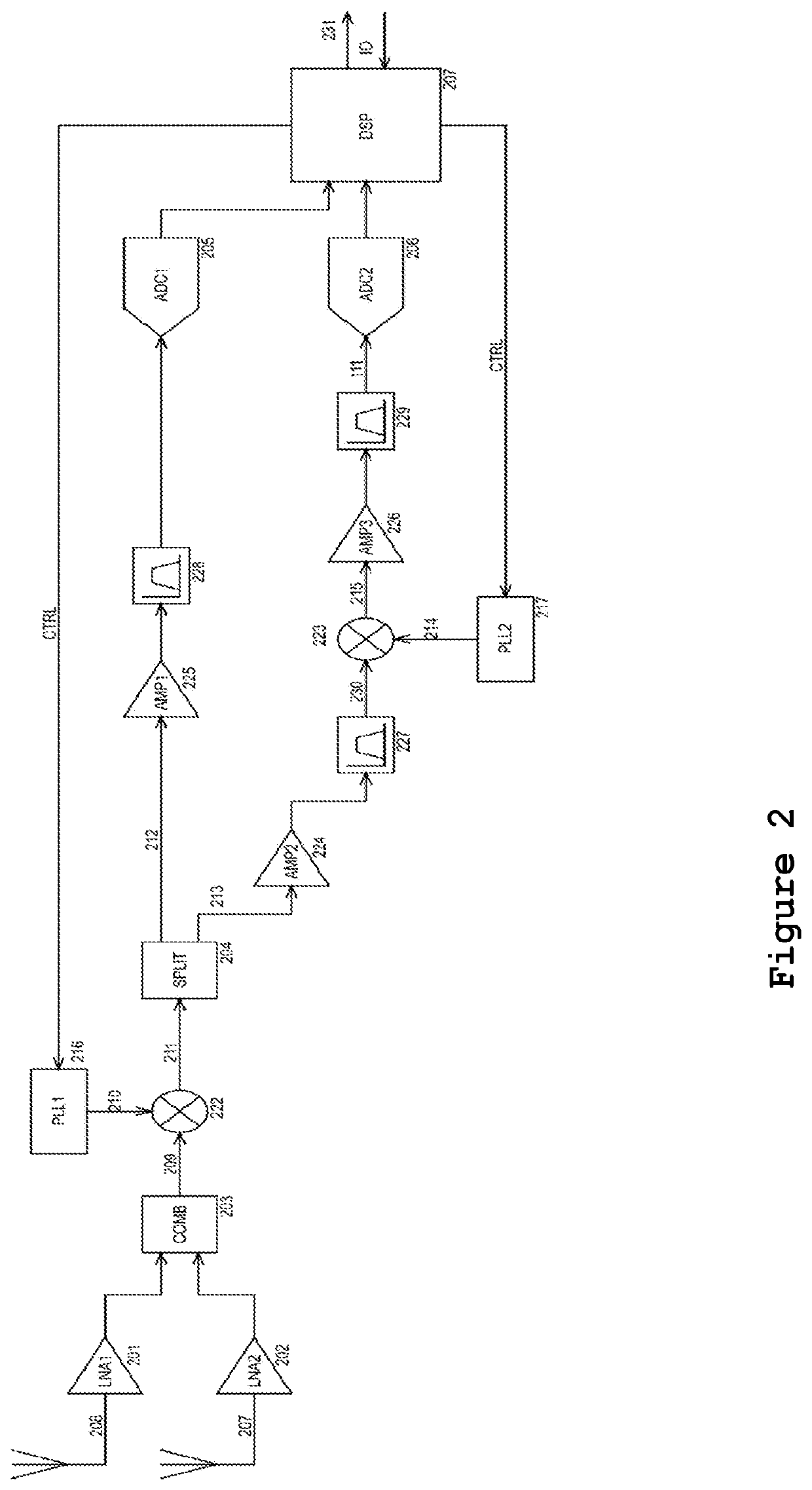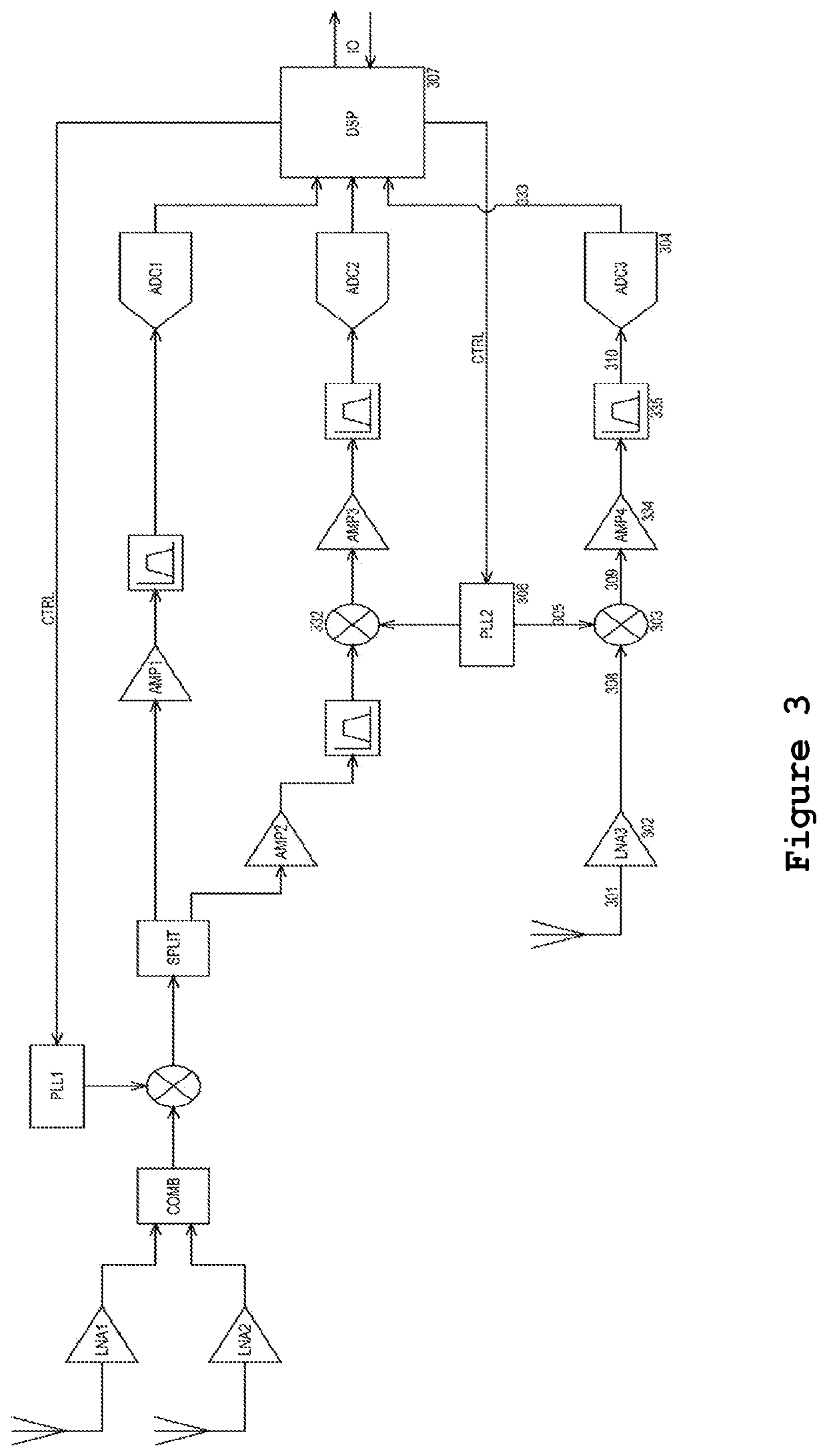A method for suppresing noise and increasing speed in miniaturized radio frequency signal detectors
- Summary
- Abstract
- Description
- Claims
- Application Information
AI Technical Summary
Benefits of technology
Problems solved by technology
Method used
Image
Examples
embodiment
Preferred Embodiment
[0030]The circuitry and the functional detail of the preferred embodiment in accordance with the invention will be explained in detail in the following paragraphs.
[0031]In the preferred embodiment as shown in FIG. 1, a circuit is comprised of input RF antenna (112) feeding the input of a low noise amplifier (LNA) (105) and output of LNA is feeding a first stage mixer (103). In the preferred embodiment application, a high bandwidth detector antenna is designed in a way that it also acts as bandpass filter so the discrete bandpass filter before the first LNA is omitted. First mixer (103) receives LO signal from the first generator (101) on the LO port (108) and input RF signal on the RF port (112) and is producing an intermediate frequency (IF) signal on its IF port. IF signal is than fed to an IF bandpass filter (113) to extract only the desired signal bandwidth. IF bandpass filter (113) is defining the possible scan range for the first generator (101) and good pr...
PUM
 Login to View More
Login to View More Abstract
Description
Claims
Application Information
 Login to View More
Login to View More - R&D
- Intellectual Property
- Life Sciences
- Materials
- Tech Scout
- Unparalleled Data Quality
- Higher Quality Content
- 60% Fewer Hallucinations
Browse by: Latest US Patents, China's latest patents, Technical Efficacy Thesaurus, Application Domain, Technology Topic, Popular Technical Reports.
© 2025 PatSnap. All rights reserved.Legal|Privacy policy|Modern Slavery Act Transparency Statement|Sitemap|About US| Contact US: help@patsnap.com



